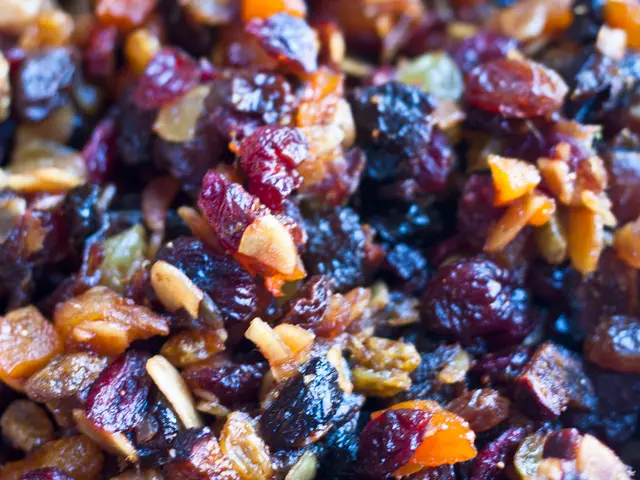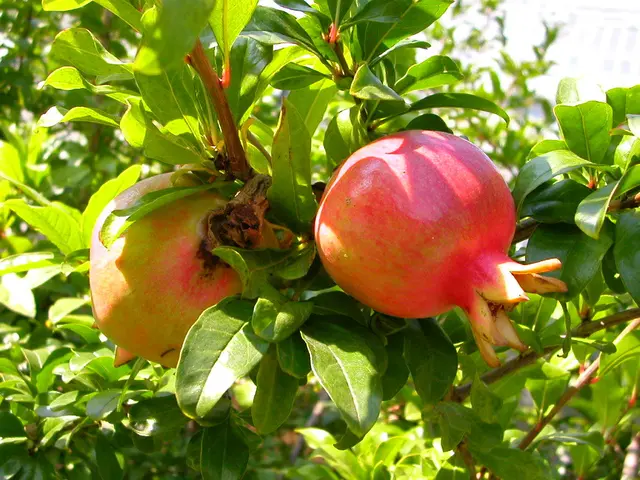Recipes for Home-Crafted Fermentations in a Breeze
Whoa, homie, fermentin' at home ain't just for hippies! It's a dope way to get your grub on and keep it fresh, all while bustin' out some crazy flavors. Here's the lowdown on this badass idea.
What's the deal with fermented food?
Fermented foods? You've probably been eating 'em for years without even knowin'! Consider bread, beer, sauerkraut, vinegar, yogurt, and kombucha—yeah, they're all fermented bitches! Recipes for these delicious delights all share one common ingredient: MICROORGANISMS, like yeast, bacteria, or molds, that transform your basic food into something divine.
Wild or cultured? Choose your fermentation style
There's two main ways to get your ferment on: wild and cultured.
Wild fermentation uses the natural microorganisms that hang out on your food or in the air. For instance, making sauerkraut just needs some cabbage and salt—the lactic acid bacteria that's already chillin' on the cabbage does all the work.
Cultured fermentation, on the other hand, involves some science-y shit, using microorganisms that were specifically bred in a lab to ensure a successful recipe. Making bread with packaged yeast, for example, falls under this category. Some cultured fermentations even use a "mommy scoby" or "scoby" (Short for Symbiotic Culture of Bacteria and Yeast) to make kombucha, where a small piece of a previous batch starts a new fermentation.
Easy fermented veggies for beginners
Vegetables are the bomb for fermentin' newbs! Recipes are usually simple and require just two ingredients: veggies and salt. It's like unlocking a whole new flavor dimension in your pantry! Cabbage, radishes, carrots, cucumbers—almost all vegetables can undergo the magic of fermentation.
Get freaky with fermented beverages
Swap out boring ol' soda for somethin' with some actual nutritional value! Fermented beverages are fizzy, delicious, and even contain probiotics to improve your gut health.
Tepache, a zero-waste recipe using pineapple peels, takes just a few days to transform into a refreshing pineapple beer. Or, try Sima, a Finnish lemonade, that can only be made fermented! Kombucha, too, is a tangy, fizzy drink made from fermented sweet tea and a scoby. Water kefir, a slightly quicker option, requires just water, sugar, and water kefir grains for its tangy, fizzy goodness.
Syrups and vinegars—flavor central
Syrups and vinegars are easy pow-wows to add hella flavor to your dishes or drinks.
Apple peel vinegar, made from apple peels, sugar, bread yeast, and unpasteurized cider vinegar, is a cinch to whip up. Or, give shrub a whirl—it's a raw syrup made from berries that has a long history in many cultures. Blueberry shrub is a perfect addition to cocktails or mocktails.
Yogurt and fermented milk—because milk can be more than just food
Making yogurt at home requires cultures (grains or powdered cultures), but it's way easier than you think! Finnish yogurts like Viili and Matsoni are unique and delish choices for a change from conventional yogurt.
Koji products—Japanese fermentation mastery
Koji is a fermented rice used in various traditional Japanese dishes. Though making it at home is an option, buying koji is more convenient. With koji, you can make Shio Koji, a salty, umami-packed marinade for meats and veggies, or Miso, a fermented soybean paste used as a seasoning or ingredient in countless recipes.
So there you have it, fool! Start your fermentation journey today and unlock a whole new gastronomic universe. Your taste buds will thank you! 🤘🏼🍽️🥤🍎🌽🍠🥒🍦🍨🍍🍋👀🤘🏼🤤💪🏼🤩🤩🤩🤩🎉🤩🎉🤩🎉🤩🎉🤩🎉🤩🎉🤩🎉🤩🎉🤩🎉🤩🎉🤩🎉🤩🎉🤩🎉🤩🎉🤩🎉🤩🎉🤩🎉🤩🎉🤩🎉🤩🎉🤩🎉🤩🎉🤩🎉🤩🎉🤩🎉🤩🎉🤩🎉🤩🎉🤩🎉🤩🎉🤩🎉🤩🎉🤩🎉🤩🎉🤩🎉🤩🎉🤩🎉🤩🎉🤩🎉🤩🎉
- fermented foods like bread, beer, sauerkraut, vinegar, yogurt, and kombucha are made using microorganisms such as yeast, bacteria, or molds,
- wild fermentation uses the natural microorganisms that are present on food or in the air, while cultured fermentation involves specific microorganisms that have been bred in a lab,
- easy fermented veggies for beginners include recipes that require just two ingredients: vegetables and salt,
- fermented beverages such as tepache, Sima, kombucha, water kefir can offer nutritional benefits and improve gut health.








